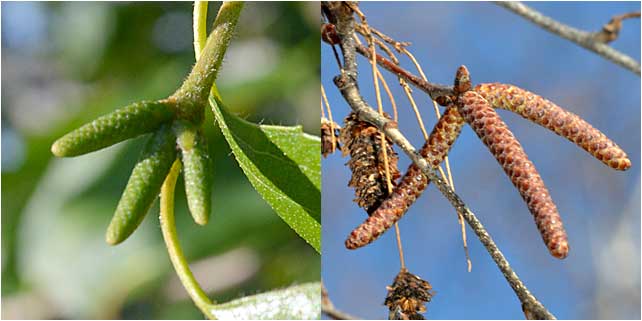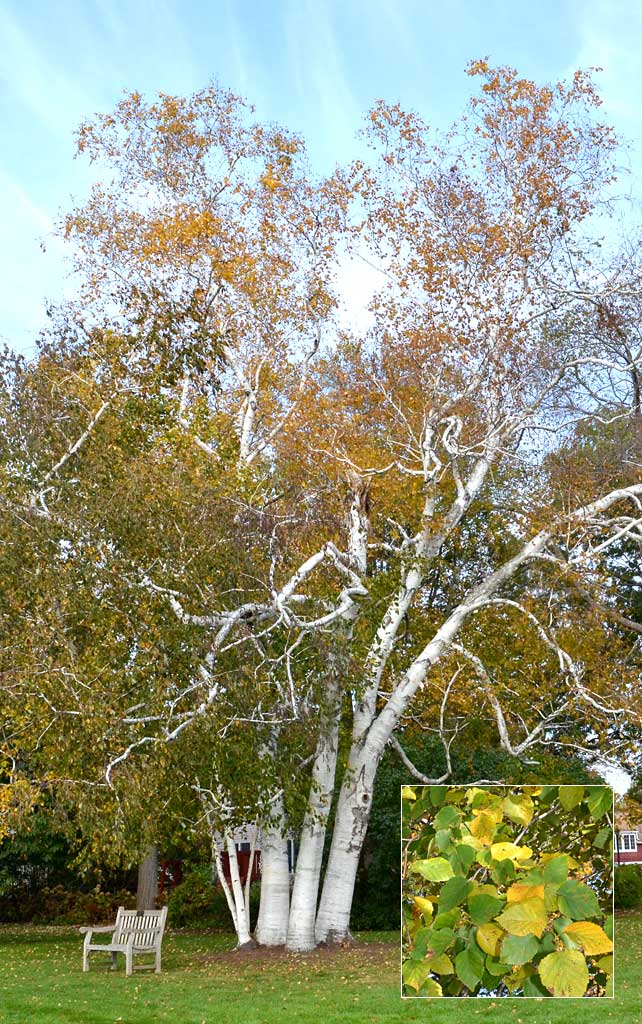13. WHITE BIRCH, Betula papyrifera

American White Birch, also known as Canoe Birch or Paper Birch, is a graceful ornamental tree native to our region. In spring, like oaks, it has a dreamy quality to it, the foliage very soft looking. This is because the leaves have just started to form, and you are seeing...
MALE CATKINS, SPRING

These catkins are actually long clusters of tiny, individual male flowers on a single stem. They give the White Birch its dreamy spring look, and may be seen close-up (right). This is the Birch tree used by Native Americans to make canoes.
FEMALE FLOWERS

Female flowers appear on the trees in Spring as well. The un-fertilized flowers are small and upright on the branches. After they are fertilized, they enlarge over the summer until they reach this size. The close-up (right) shows the early formation of "nutlets" that actually contain the Birch seeds. The nutlets will be dispersed over fall and winter, and may still be found on the tree the following Spring.
SUMMER

Summer foliage is dominated by the attractive leaves of the White Birch, and the showy bark helps make this tree one of the most photographed at the Westmoor Arboretum.
SPRING, BEHIND THE SCENES

New male catkins begin to grow during the Summer months (left) and will over-winter on the tree. They will bloom next Spring.
SUMMER

Some years the fall foliage is muted, other times a brilliant yellow (see inset). Fall is a busy time for Birches. The female flowers have matured, and begin to disperse thousands of seeds.
FALL, FRUIT & SEEDS

The female fruit ripens and turns brown, and over both fall and winter the tiny nutlets which contain the seed will be born on the wind to destinations unknown. The nutlets are bound to the central spike which persists till the following spring.
WINTER

There are times in Winter when this White Birch is simply amazing. The sky has tinges of white while the tree and bark contrast against a dusting of white snow.